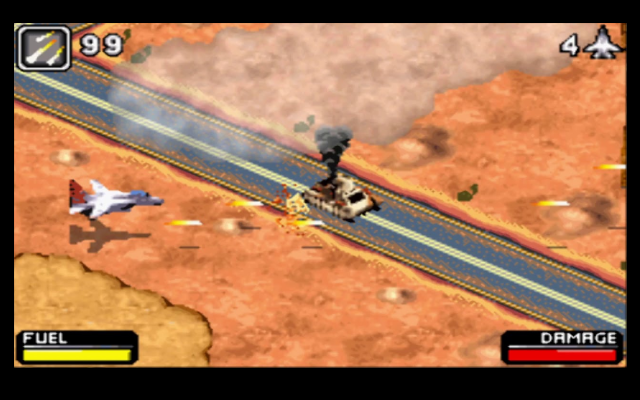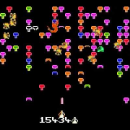Operation: Secret Storm – A Controversial NES Action Game from the 1990s

Released in 1992 for the Nintendo Entertainment System (NES), Operation: Secret Storm is an action platformer that gained notoriety due to its controversial subject matter and simplistic gameplay. Developed and published by Color Dreams, a company known for producing unlicensed NES games, Operation: Secret Storm attempts to capitalize on the political climate of the early 1990s, particularly the Gulf War. The game places players in the role of a secret agent tasked with infiltrating enemy lines to stop a notorious dictator—a thinly veiled representation of Saddam Hussein. Despite its ambitious premise, the game struggled to make a lasting impact due to its gameplay issues and controversial themes.
The Story of Operation: Secret Storm
Operation: Secret Storm follows the story of an unnamed American agent sent on a covert mission to destabilize the forces of a Middle Eastern dictator. The game’s narrative draws heavily from the real-world events of the Gulf War, with the player’s mission centered around disrupting enemy operations, rescuing hostages, and ultimately confronting the dictator himself. The story is told through simple cutscenes and in-game dialogue, with the player progressing through various levels set in different hostile environments.
The game’s plot is straightforward and largely serves as a backdrop for the action. The player is tasked with navigating through enemy territory, defeating soldiers, and avoiding traps, all while collecting intelligence and completing objectives. The narrative lacks depth and nuance, with the primary focus being on the gameplay and the controversial use of real-world political events as inspiration.
Engaging Gameplay and Mechanics
Operation: Secret Storm is an action platformer that follows the basic formula of many games from the NES era. Players control the secret agent as he runs, jumps, and fights his way through various levels. The game’s mechanics are simple, with the player able to perform basic actions such as shooting, jumping, and punching. The controls, however, are often criticized for being unresponsive and clunky, making the gameplay more frustrating than challenging.
The game’s levels are designed to represent different locations within the fictionalized version of the Middle East, with environments ranging from deserts to military compounds. Each level is filled with enemies that the player must defeat or avoid, including soldiers, tanks, and helicopters. The player must also contend with various environmental hazards, such as landmines and quicksand, which add to the game’s difficulty.
One of the most notable aspects of Operation: Secret Storm is its use of a health and ammo system, which requires players to manage their resources carefully. Health pickups and ammunition are scattered throughout the levels, but they are often placed in difficult-to-reach areas, forcing players to take risks to obtain them. This system adds a layer of strategy to the gameplay, though it is often undermined by the game’s poor controls and hit detection.
The game also features boss battles at the end of certain levels, where the player must face off against more powerful enemies. These battles are often the highlight of the game, providing a greater challenge than the standard enemies. However, like the rest of the game, these encounters are marred by the inconsistent controls and hit detection.
Memorable Characters and Environments
While Operation: Secret Storm attempts to create a memorable experience through its setting and characters, it falls short in many areas. The protagonist, an unnamed American agent, is a generic action hero with little personality or backstory. The antagonist, clearly inspired by Saddam Hussein, is portrayed as a one-dimensional villain, with no depth or motivation beyond his role as the game’s final boss.
The environments in the game are varied, but they lack the detail and creativity seen in other NES titles. The backgrounds are often repetitive, with limited color palettes and simplistic designs that fail to capture the atmosphere of the locations they are meant to represent. The game’s graphics are serviceable, but they do not stand out in the crowded field of NES action games.
The sound design in Operation: Secret Storm is similarly uninspired. The music is repetitive and lacks the memorable tunes found in other games of the era. The sound effects are basic, with little variation or impact, further detracting from the overall experience.
Cultural Impact and Legacy
Operation: Secret Storm is best remembered today for its controversial subject matter rather than its gameplay. The game’s use of real-world political events and figures as inspiration for its story was unusual for the time and drew criticism for its perceived insensitivity. While the game was clearly intended to capitalize on the Gulf War’s prominence in the media, its simplistic portrayal of complex geopolitical issues and the thinly veiled representation of real-world figures did not sit well with many players and critics.
The game’s legacy is largely defined by its status as an unlicensed NES title. Produced by Color Dreams, a company known for bypassing Nintendo’s official licensing process, Operation: Secret Storm was one of many games released without the “Nintendo Seal of Quality.” As a result, the game suffered from the lower production values and lack of polish that were common among unlicensed titles.
Despite its flaws, Operation: Secret Storm has gained a small following among retro gaming enthusiasts, particularly those interested in obscure and controversial games from the NES era. The game is often cited as an example of the more experimental and boundary-pushing titles that emerged during the early 1990s, even if it failed to achieve mainstream success.
The Art of Controversial Game Design
One of the most interesting aspects of Operation: Secret Storm is its attempt to merge real-world events with video game storytelling. While the game ultimately falls short in many areas, it represents an early example of how games can reflect contemporary issues and politics, even if the execution is flawed. The game’s use of a fictionalized version of the Gulf War as its setting raises questions about the ethics of using real-world conflicts as the basis for entertainment, a topic that continues to be relevant in the gaming industry today.
The game’s controversial subject matter, combined with its status as an unlicensed title, makes Operation: Secret Storm a curious footnote in the history of video games. While it is far from a classic, it offers a glimpse into the more experimental and provocative side of early 1990s game design.
Conclusion
Operation: Secret Storm is a reflecting both the political climate of the early 1990s and the experimental nature of unlicensed NES games. While its gameplay and presentation leave much to be desired, its controversial subject matter and unique place in gaming history make it a title worth exploring for retro gaming enthusiasts. Whether you’re interested in its historical context or simply curious about its gameplay, Operation: Secret Storm offers a unique, if flawed, experience that stands as a reminder of the diverse and often controversial nature of early video game design.








